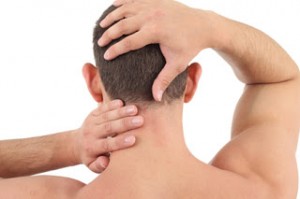By John Walz, MPT –


What is lymphedema and how does it develop?
Lymphedema is a condition caused by the accumulation of lymphatic fluid in the body that causes swelling in the arms and legs. It usually develops slowly over time. The swelling can range from mild to severe. It can start soon after surgery or radiation treatment. But it can also begin months or even many years later.
Swelling may occur as a result of injury, radiation, removal of lymph nodes, cellulitis infection, diabetic ulcers, and hip or knee replacement. Patients who have had breast, gynecological, testicular, bladder, colon, prostate or skin cancer are at an increased risk for developing lymphedema, either immediately following surgery or several years later.
Early on, the swelling may be relieved by raising the affected limb and the skin usually stays soft. But over time, the swollen area may become hot and red and the skin hard and stiff.
Lymphedema most often causes a feeling of heaviness, slight discomfort, cosmetic, deformity, and repeated episodes of infection, such as cellulitis.
Treating Lymphedema
There is still a lot to be learned about lymphedema, but there are ways that you can care for your arm and breast area to reduce your chances of having future problems. Once lymphedema has started, it cannot be cured. But early and careful management can reduce symptoms and help keep it from getting worse.
Mild lymphedema should be treated by a physical therapist or other health care professional who has gone through special training. Moderate or severe lymphedema is most often treated by a therapist with special training and expertise who will help you with skin care, massage, special bandaging, exercises, and fitting for a compression sleeve.
Today, the most effective lymphedema treatment is known as Combined Digestive Therapy (CDT). CDT effectively reduces swelling and reverses the tissue changes of lymphedema. Depending on the severity of the condition, the intensive phases of treatment is 3 to 5 times per week and lasts 4 to 8 weeks. Then, as needed, maintenance visits are scheduled bi-weekly or monthly.
CDT includes the following components:
1. Manual Lymph Drainage (MLD)
MLD is a type of massage used along with skin care, compression therapy, and exercise to manage lymphedema. MLD is a specific pattern of very slow, light and rhythmic stretching of the skin in circular movements to stimulate the lymphatic vessels ad nodes. Through consistent MLD, alternate pathways are created by re-routing stagnant fluids to healthy lymphatic vessels and nodes.
2. Compression Bandaging
We use “short” stretch bandages (not ACE bandages) to prevent the re-accumulation of lymphatic fluid. Also, we apply Kimesio Tape to reduce pain and inflammation. Compression bandages increase the efficiency of the muscle and joint pumps and is used until the limb is sufficiently reduced to be fitted for compression garments.
3. Exercise
Remedial range of motion exercises, with the bandages in place enhances the movement of lymph fluid out of the limb by activating the muscle and joint pump. Instruction in diaphragmatic breathing exercises improves lymphatic flow. Each exercise program is customized depending on the patient’s needs.
4. Skin Care/Hygiene
Meticulous skin and nail care inspection is essential to observe any sign of bacterial or fungal infections. Before each bandaging session, pH balanced moisturizing skin lotion is applied to the skin. We work along with local wound care centers and physicians following wound care protocols.
Manual Lymph Therapy is an effective treatment for: post breast reconstructive surgery, post plastic surgery, wound care, swelling due to sports injury, trauma, diabetes, post orthopedic surgery, and venous insufficiency.
Why is treatment to reduce swelling so important?
If left untreated, lymphedema can lead to the hardening of underlying soft tissue (fibrosis) and overall bulkiness in the arms and legs. It also reduces the level of oxygen flow to the tissues which interferes with wound healing. If the condition persists, the skin thickens and hardens, and can lead to impaired mobility, decreased muscle strength and poor quality of life.
Who performs the CDL treatment?
Request Physical Therapy has a dedicated group of Physical and Occupational Therapists who carefully treat you and monitor your progress. Our entire staff is certified Lymphedema therapists in the Dr. Vodder method.
Take care of yourself
Taking care of your whole body is important. Eat well and get to and stay at a healthy weight. Try to eat 5 or more servings of vegetables and fruits each day. Choose whole-grain foods instead of white flour and sugars. Try to limit animal fats and trans fats. Cut back on processed meats like hot dogs, bologna, and bacon. If you drink alcohol, limit yourself to 1 drink a day. And don’t forget to get some type of regular exercise. A good diet and regular exercise can help you stay at a healthy weight and give you more energy. Try to reduce the stress in your life and get enough sleep, too.
You can’t change the fact that you are at risk for lymphedema. What you can change is how you live your life — taking good care of yourself, making healthy choices, and doing what you can to make your body and your mind feel as good as possible. For more information about Combined Digestive Therapy call Request Physical Therapy at (941) 744-9046 to learn how it can relieve lymphedema swelling and pain.
Physical Therapy
2722 Manatee Ave W, #2
Bradenton
(941) 744-9046
701 Manatee Ave West, #103
Bradenton
(941) 567-6287
1922 53rd Avenue East
Bradenton
(941) 896-9768
506 4th Ave West
Palmetto
(941) 729-1800
 Southwest Florida's Health and Wellness Magazine Health and Wellness Articles
Southwest Florida's Health and Wellness Magazine Health and Wellness Articles

